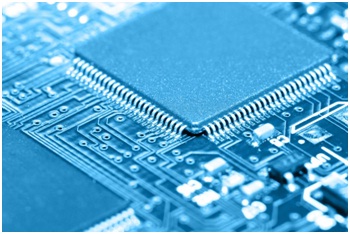Printed circuit boards are the dynamic forces forming the core of each and everything that we use ordinarily — be it smart phones, control panels for industrial equipment, or the display screens. With that being noted, when a PCB fails to function or perform, it interrupts our individual and professional lives tremendously.
 The reasons for printed circuit board breakdown can commonly be associated to one of two aspects: operational issues arising from ecological hassles, or operational issues stemming from the design and construction stage of the PCB. Every now and then, these malfunctions take place upon years of usage, and at times, the problems have been unintentionally put up into the board in the course of its production, causing it to break down much before its first use. Fortunately, on account of the physicality of the printed circuit boards, most problems with the PCBs can be repaired.
The reasons for printed circuit board breakdown can commonly be associated to one of two aspects: operational issues arising from ecological hassles, or operational issues stemming from the design and construction stage of the PCB. Every now and then, these malfunctions take place upon years of usage, and at times, the problems have been unintentionally put up into the board in the course of its production, causing it to break down much before its first use. Fortunately, on account of the physicality of the printed circuit boards, most problems with the PCBs can be repaired.
Environmental Problems
Environment-related issues sprout when a PCB is uncovered to things or circumstances that have an effect on its performance. Temperature, debris, and wetness are the most widespread variables that obstruct performance, whereas, unplanned impacts (such as dropping, discharge of electrostatic, collapsing, etc) or supply of surplus power from lightning or power rush can also be brutally damaging to your PCBs.
Remember; not even the most skillfully manufactured printed circuit board can stand strong against an electrical fire breakout! Moreover, rudiments such as dirt can also corrupt your board gradually, oxidizing it and hindering its existence. Also, severely high temperatures, very common on manufacturing grounds, can also damage its components.
Generally, most of these problems (such as a scorched component) can be identified easily. However, if your board is deteriorating and the core problem is still not known, know that it requires immediate testing using investigative equipment to pin down the concern.
Manufacturing Problems
By and large, human inefficiency is the origin of all the PCB manufacturing concerns. From misinterpreting a diagram to wrongly labeling a component, there is an unending list of issues that can sprout at any given point in the design and manufacturing phases of PCB development.
Here’s a quick overview of some of some common and ordinary PCB manufacturing problems: components installed incorrectly or incorrectly placed;
- Improper soldering resulting in weak solder joints;
- Unsuitable thickness of the board eventually causing it to bend or break;
- Meager padding of traces leading to a voltage sweep, can be a probable cause of a burnt board;
- Traces and pathways unintentionally placed very closely to one another, causing short circuit;
- Improper connection between the layers of board contributing to unproductive performance;
If you want to buy printed circuits boards that are of top quality and have been tested for performance and durability, you’ve come to the right place. We have the best PCB prototypes and a stellar reputation as PCB manufacturer and supplier. Learn more about us and the services we provide.
